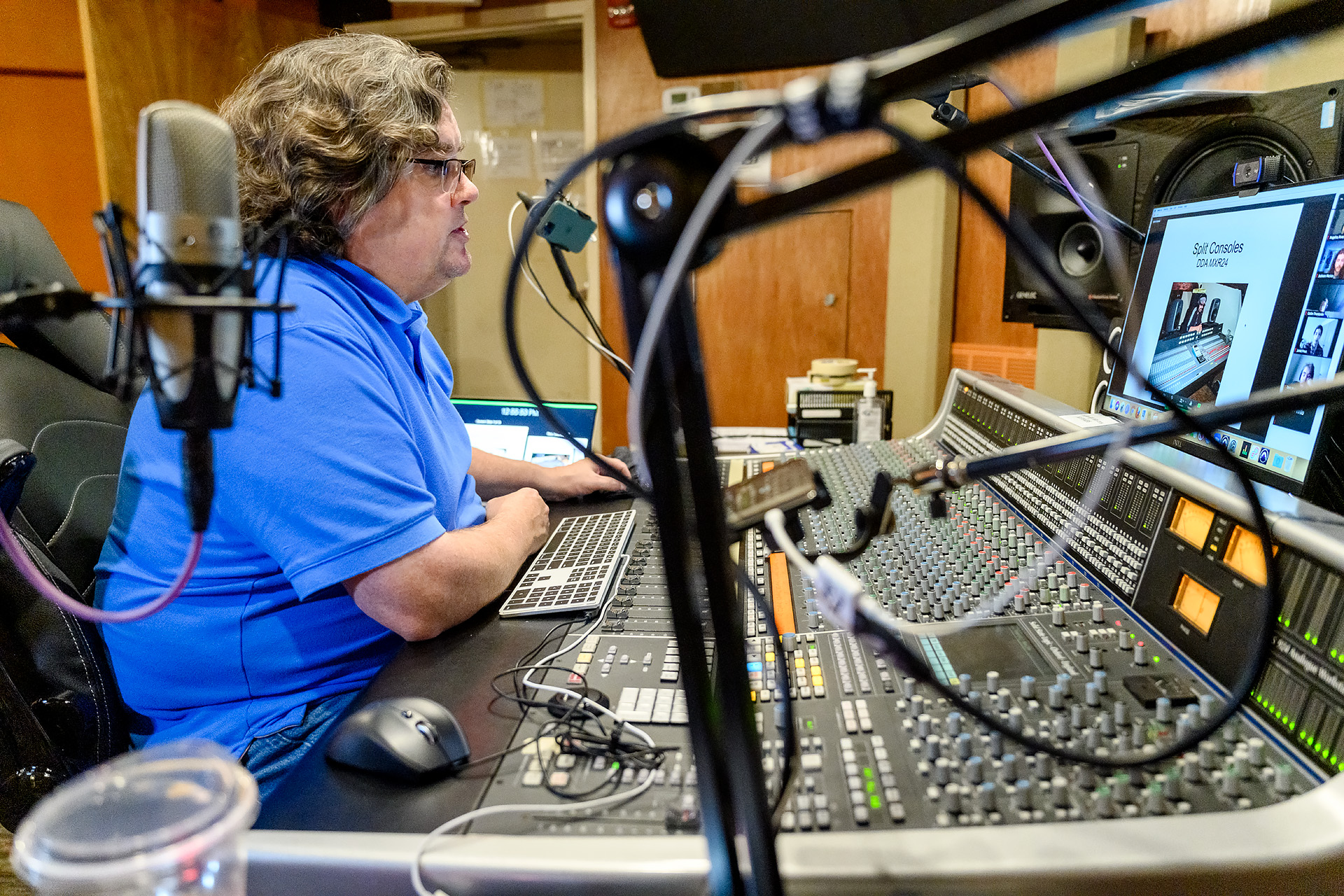For some in the teaching profession, the COVID-19 pandemic meant facilitating lectures and discussions via a Zoom virtual meeting. For others, the logistics of virtual teaching has proven to be a great deal more complicated. For Bill Crabtree, a professor in the Audio Production program, remote-teaching meant creating a multi-camera, high-definition audio classroom within four of MTSU’s recording studio control rooms.
“Most of what I teach is hands-on,” Crabtree said. “Our students have to learn how all the equipment in the room works, how to collaborate with others in the control room, and how to work with musicians during a recording session. We knew right away when COVID hit that we’d need to make a virtual TV studio in the audio control room. We had to really scramble in the spring to figure it out quickly and muddle through—which we did.
“For the fall, we were able to prepare better for it. I spent a good part of the summer researching and testing ways to communicate recording technologies and techniques over Zoom.”
His innovative, real-time solution proved remarkably effective in the spring, which he improved upon by the start of the fall 2020 semester. Crabtree’s setup relies upon a Zoom-friendly switcher to manage video feeds shot by three iPhone SEs mounted throughout the studio into a cohesive live presentation that supports his lessons to students. All students participate remotely for class demonstrations and then work in small groups with graduate assistants for hands-on practice.

Bill Crabtree had to get creative with teaching his students when the pandemic hit. (Photo: J. Intintoli)
“We chose the iPhone over other, more expensive options because they’re very tolerant in low-light conditions and the onboard camera is great,” Crabtree said. “The video switcher we use— the Black Magic ATEM Mini Pro—is a new product. When we first started looking, there wasn’t a video switcher on the market that would interface well with Zoom, but the ATEM Mini Pro came out just in time. We run the system through a Mac Pro over USB. Zoom recognizes the video feed from the switcher as a webcam.”
Because discussions about audio quality are integral to the lessons, Crabtree also had to find a way to transmit higher-quality audio than what Zoom provides.
“Zoom typically operates with low-fidelity audio to help with internet speed. But that’s not acceptable when teaching about audio recording and mixing,” he said. “We needed to get a higher quality of audio to the remote students. Thanks to my colleague Michael Hansen, we found ListenTo, a product that enables high-resolution audio streaming. This makes it possible for us to stream the high-resolution studio audio separately from the low-resolution Zoom audio. We also are using ListenTo in our critical-listening classes.”

(Photo: J. Intintoli)
The innovative setup seems to be working well from both pragmatic and technological perspectives in terms of providing a high-quality learning experience for students—a longstanding hallmark of MTSU’s Department of Recording Industry program.
“The students did as well as any typical class on the midterm exam and hands-on proficiency,” Crabtree said in October. “And we’ve had almost perfect attendance, which is great.”
Zoom, ListenTo, and the multi-camera system also helped keep an integral part of the M.F.A. in Recording Arts and Technologies program intact. In 2015, MTSU began working with professional studio musicians to record songs written by MTSU Commercial Songwriting majors. M.F.A students run the sessions from the control room, and each of the songwriters gets high-quality tracks as part of their portfolio for when they enter the professional world. This fall, the musicians stayed socially distant from each other in the studio, separated from the socially distanced student engineers behind the glass in the control room. The songwriters were able to interact with both groups via Zoom while also hearing their songs being recorded in real-time.
“It was really neat,” Crabtree said. “Each of our students had the experience of working with professionals in the field, which is the point of these projects. There is just no substitute for that type of experience.”


COMMENTS ARE OFF THIS POST